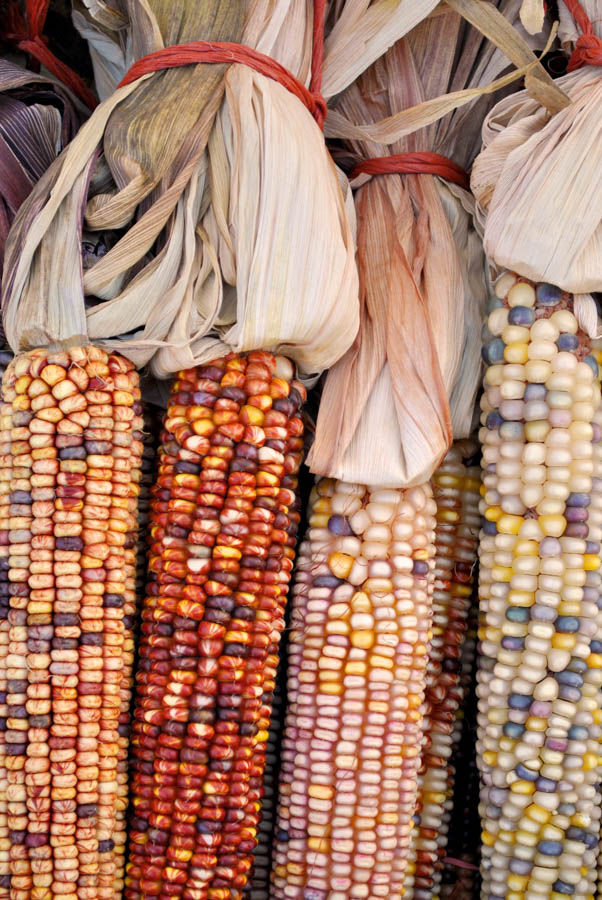Growing Fall Decorations: Ornamental Corn

GardenZeus earns commissions on sales made through links in this article. There is no additional cost to you.
Ornamental corn varieties are grown by home gardeners for their sheer beauty, novelty, and for autumn decoration and crafts. Most are unpalatable for fresh eating, although dedicated or curious kitchen gardeners may grow them to produce cornmeal. Most ornamental varieties of corn are field/dent or flint/Indian types (shown above), and they come in a wide range of colors and color combinations. Popcorn types may also be grown as ornamentals. Bloody Butcher is an old and classic heirloom dent type that produces plants up to 12 feet in height and richly red ears that can be eaten fresh like sweet corn when young. Earth Tones is a beautiful dent corn that produces kernels in striking combinations of blue, pink, green, orange, red, brown and other colors. Painted Mountain is a unique cold-tolerant modern field corn that can be eaten fresh as sweet corn when ears are young.
Hopi Blue Corn, a flint variety, is adapted to hot and dry environments. It may be eaten as sweet corn when ears are young, grown as ornamental corn, or harvested at maturity to grind into blue flour.
When growing corn, purchase seeds, not seedlings. Sow corn directly outdoors when soil temperatures are 50°F or warmer for treated seeds, and preferably 65°F or warmer for untreated seeds. GardenZeus recommends against purchasing corn starts; they are more prone than seeded plants to shock, poor or no yield, diseases, pests, and other problems.
Corn is a very heavy feeder, perhaps the most demanding of the common garden vegetables. It needs rich, fertile, well-drained soil with sufficient phosphorous, potassium, and organic matter. Avoid growing corn in the same place for more than one season every 3 years to avoid depleting soil and concentrating pest populations and diseases.
Corn needs warm soil and warm days to germinate and grow rapidly. To mature ears optimally, it needs warm nights with days that aren’t too hot. Avoid planting in low spots or garden areas where soil tends to remain wet or cold air collects.
Corn prefers full sun, but benefits from light afternoon shade when temperatures are above 95°F.
Corn requires consistent, sufficient moisture in well-drained soil, especially during seedling growth, during the critical pollination period after the emergence of the corn silks or tassels, and during development of kernels.
GardenZeus has customized growing information by plant and zip code. To get started, enter your zip code here.
Other articles of interest:
GardenZeus Secrets of Success for Growing Corn in the California Home Garden
